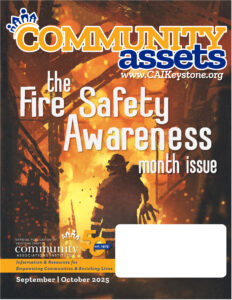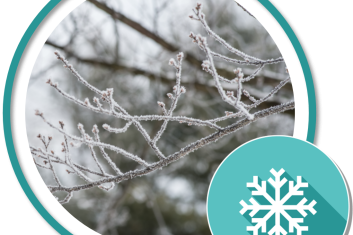Winter in the Philadelphia region brings harsh conditions—snow, ice, and freezing temperatures—that can take a toll on trees. “These factors can wreak havoc on your trees,” says Jason Gaskill, an ISA Certified Arborist with Davey Tree. “Without proper care and pruning, these challenges can lead to broken branches, structural damage, or long-term health issues.” To help protect your trees this season, here are the key do’s and don’ts for maintaining tree health:
1. DO Inspect Trees Regularly:
a. After storms, inspect for broken, damaged, or hanging branches, leaning trees or trunks, signs of deadwood, cracks, decay, weak branch unions, soil lifting near roots, imbalanced tree crowns, and any construction impacts near trees.
2. DO Prioritize Safety:
a. Avoid walking or parking under snow or ice-laden branches that could snap and fall.
b. Immediately notify your utility company if a limb is entangled in power lines.
3. DO Maintain Tree Health Year-Round:
a. Keep trees healthy, pruned, and structurally sound to minimize risks during storms.
b. Proper pruning allows wind to blow through the canopy, reducing breakage.
c. Schedule regular inspections by a certified arborist to assess tree risks and address potential hazards.
4. DO Perform Visual Checks Post-Storm:
a. Once snow melts, inspect trees for storm damage such as cracks, decay, or uprooted roots.
b. Look for leaning trees or lifted soil near the base, which could indicate root damage.
5. DO Use Advanced Tree Care Techniques:
a. Employ proper pruning to remove dead or weak branches.
b. Consider cabling to stabilize trees like birch or hemlock under snow and ice.
c. Consult arborists for advanced analysis when risks are not immediately visible.
6. DO Act Proactively:
a. Address potential issues like weak branches or decay before the next storm hits.
b. Contact professionals to treat defects that can prolong a tree’s life or reduce risks.
7. DON’T Shake Snow-Laden Branches:
a. Shaking can cause brittle branches to break or damage the tree’s circulatory system.
b. Sudden removal of weight can cause branches to snap back, leading to further damage.
8. DON’T Ignore Warning Signs:
a. Overlooked deadwood, cracks, decay, or other defects can increase the likelihood of tree failure.
b. Trees impacted by construction or with lopsided crowns need attention to avoid future hazards.
9. DON’T Attempt Hazardous Work Yourself:
a. Leave risky maintenance to professionals, such as removing large branches or assessing leaning trees.
b. Some tree defects require specialized tools and expertise to address safely.
10. DON’T Delay Necessary Tree Care:
a. Waiting until after storms to address weak or damaged trees can lead to risks and/or damage.
“Proper care now can ensure your trees and landscape thrive come spring,” says Gaskill.
ABOUT THE AUTHOR
The Davey Tree Expert Company, headquartered in Kent, Ohio, provides research-driven tree services, grounds maintenance and environmental and utility infrastructure consulting for residential, utility, commercial and environmental partners in the U.S. and Canada. As one of the top ten largest employee-owned companies in the U.S., Davey’s 12,000 employees have been dedicated to creating and delivering sustainable solutions since 1880. Learn more at www.Davey.com. For personalized guidance or services, contact Jason Gaskill, an ISA Certified Arborist, at Davey Tree for expert advice tailored to your landscape’s unique needs Jason.Gaskill@Davey.com.

















